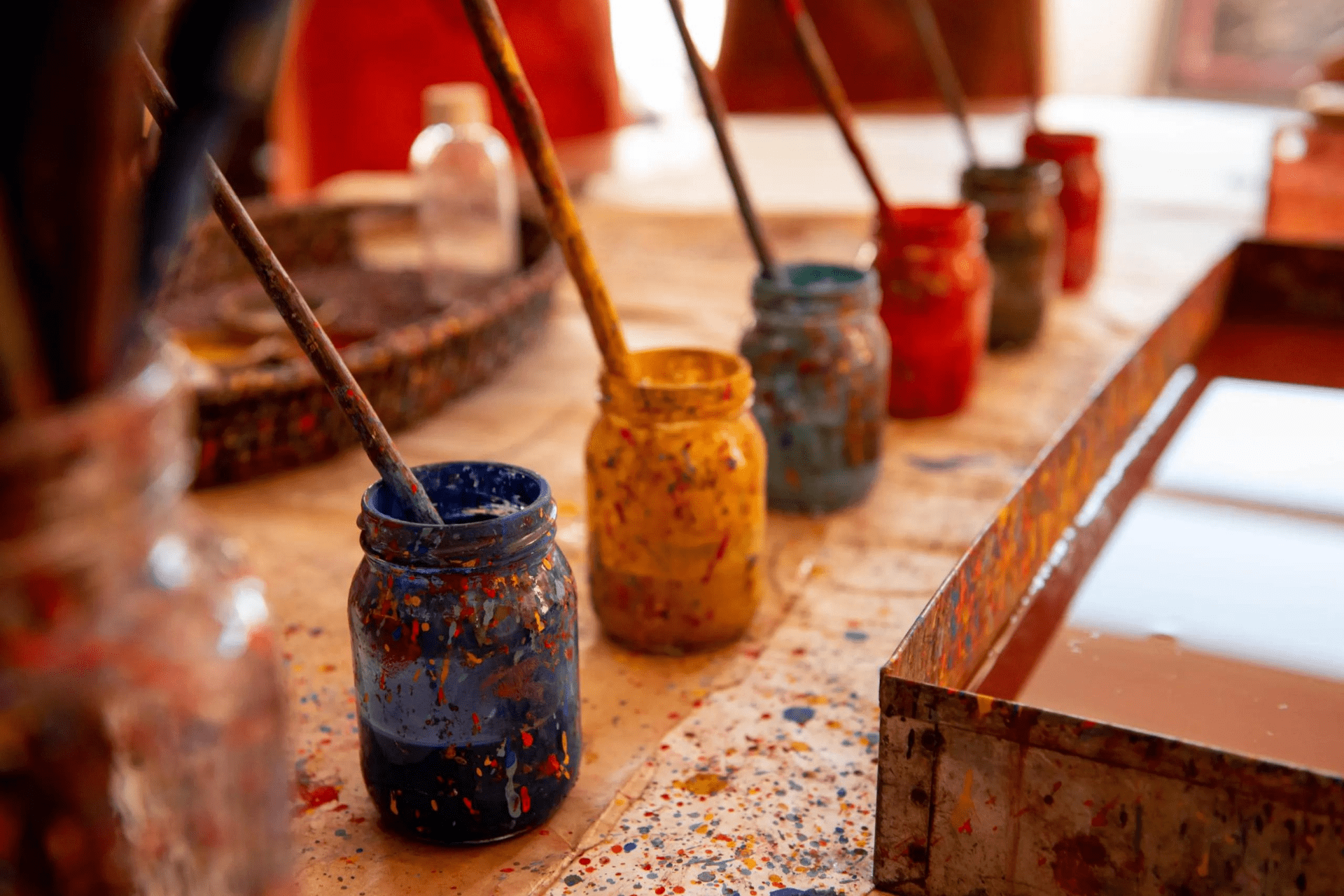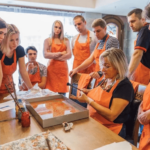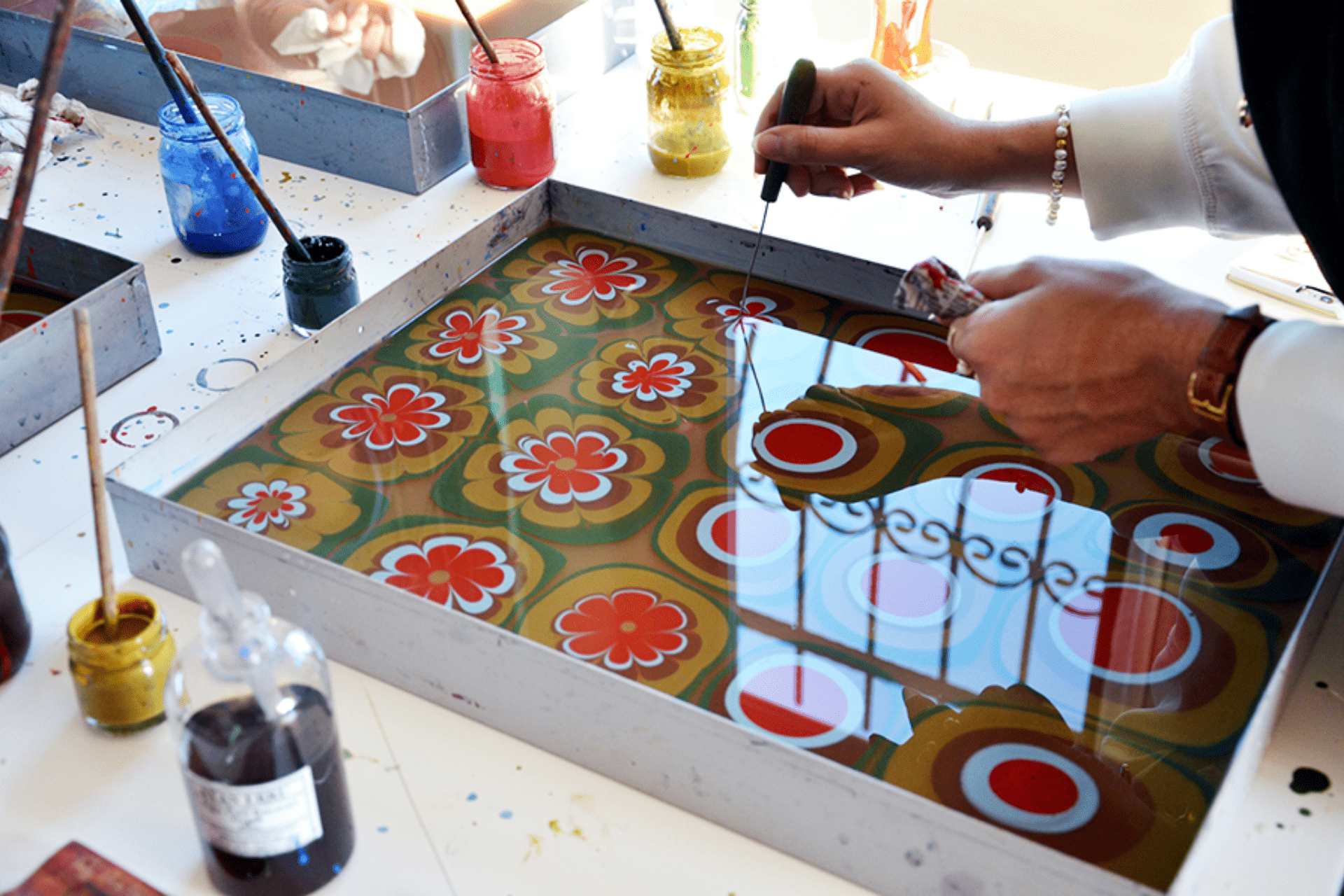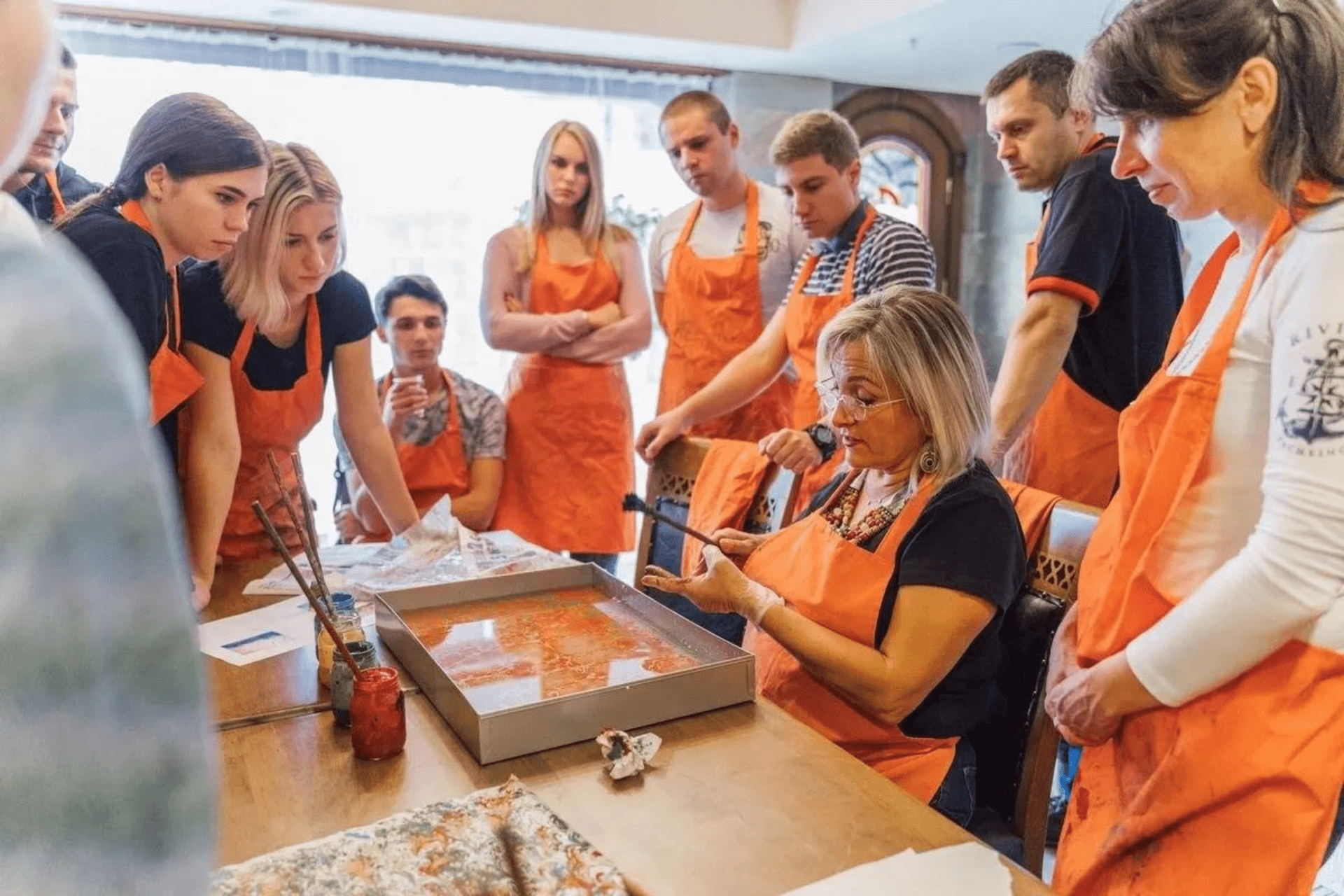Marbled paper, called ebru in Turkish, was used extensively in the binding of books and within the calligraphic panels in Turkey. The existing word ebru in Eastern Turkish, meaning variegated, points to the fact that marbling might have been known by the populations of Central Asia. Its origin might ultimately hark back to China, where a document from the T’ang dynasty (618-907) mentions a process of coloring paper on water with five hues. In the early examples from the 16th c. in the Ottoman-Turkish era, ebru appears in the battal (stone) form, namely without any manipulation. Interestingly, several variations developed in time, giving us types such as gelgit, tarakli, hatip, bülbül yuvasi, çiçekli (respectively come-and-go, combed, preacher, nightingale’s nest, flowered, etc.) An attempt has been made here to show some of its principal patterns, with samples by the master marblers of this century chosen from our collection.





